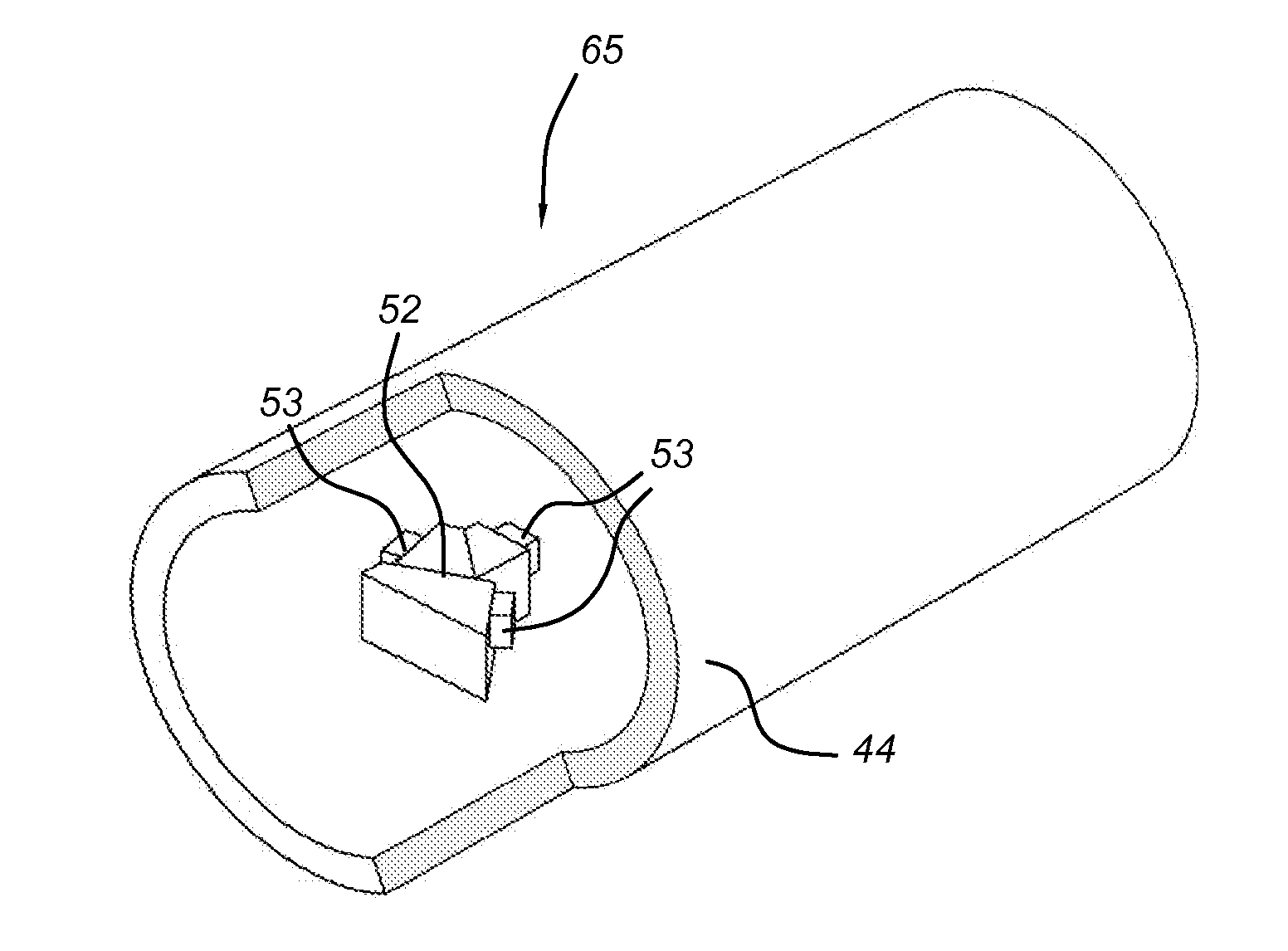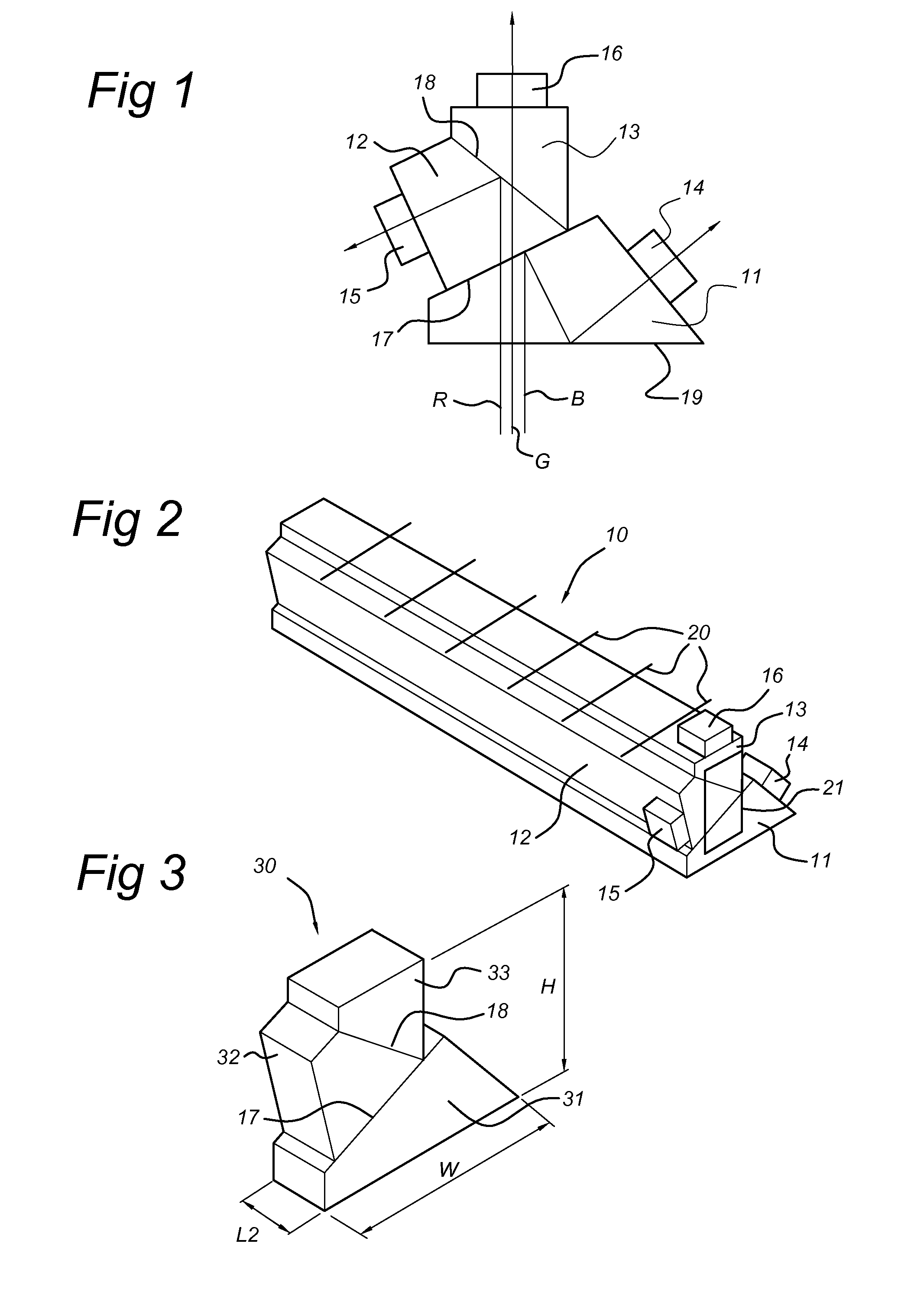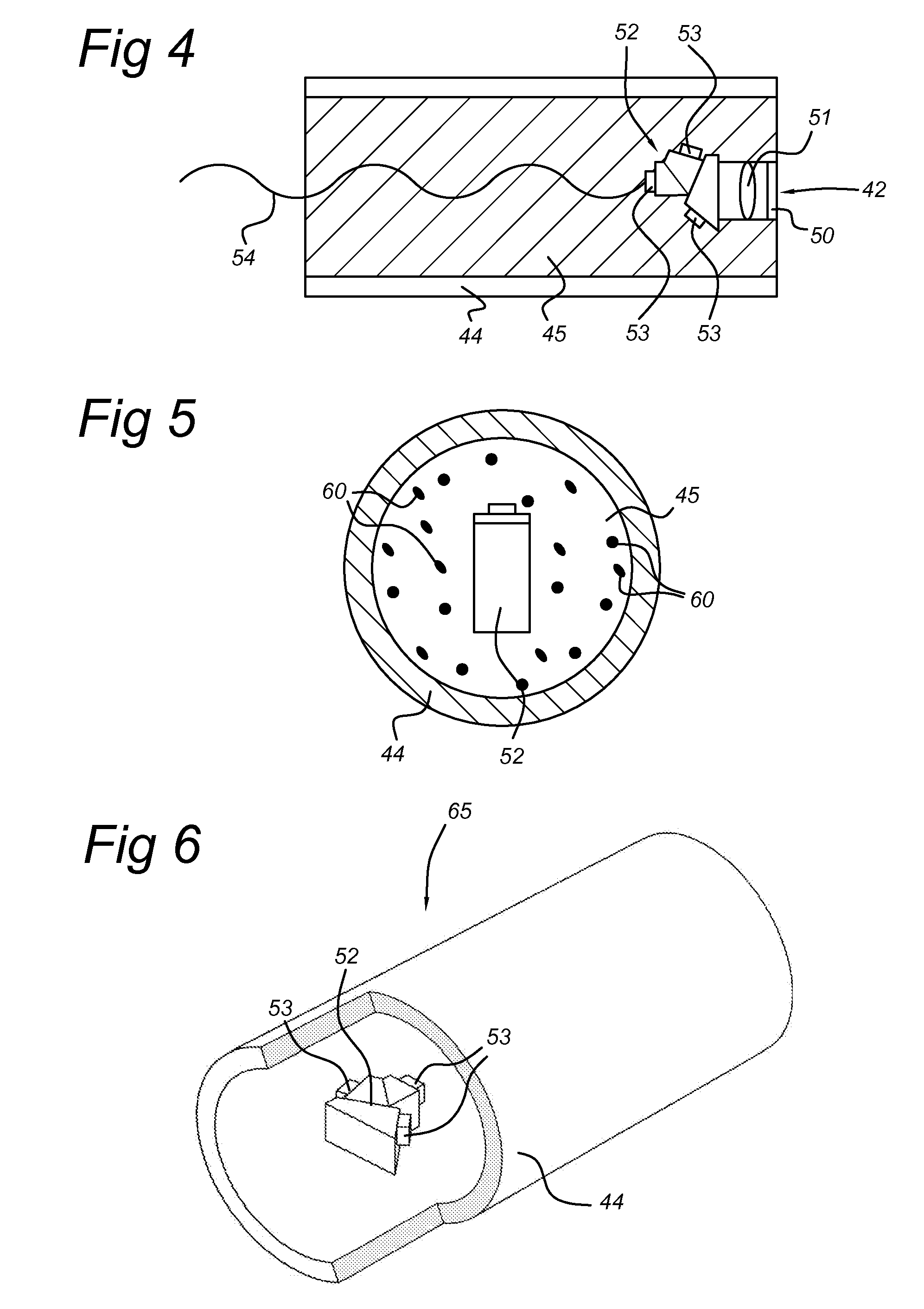Method and device for detecting fluorescence radiation
a fluorescence radiation and detector technology, applied in the field of detectors for fluorescence radiation, can solve the problems of reducing no viable solution, and not addressing the problem of separating measured fluorescence radiation from background radiation, so as to achieve robust implementation, numerically reduce the effect of background radiation on measured signal, and improve the signal to noise ratio
- Summary
- Abstract
- Description
- Claims
- Application Information
AI Technical Summary
Benefits of technology
Problems solved by technology
Method used
Image
Examples
Embodiment Construction
[0046]FIG. 1 schematically shows light paths through a dichroic prism assembly. An exemplary dichroic prism assembly configured to separate light into red R, green G, and blue B components will now be discussed to illustrate the functioning of such assembly. However, the invention is not limited to separation into R, G, and B. In reference to FIGS. 7-12, other wavelengths will be discussed. It will be clear to a skilled person that a dichroic prism assembly is a light separation means which can be configured to separate light into arbitrary wavelengths.
[0047]Returning to the exemplary assembly of FIG. 1, light comprising red R, green G and blue B components enters the assembly through incident surface 19, shown here as the bottom surface of the assembly. The first transition surface 17, between the first 11 and second prisms 12 comprises a coating that is configured to reflect blue light and transmit red and green light. The blue component B is nearly totally reflected and, due to t...
PUM
| Property | Measurement | Unit |
|---|---|---|
| wavelength range | aaaaa | aaaaa |
| wavelength range | aaaaa | aaaaa |
| wavelength range | aaaaa | aaaaa |
Abstract
Description
Claims
Application Information
 Login to View More
Login to View More - R&D
- Intellectual Property
- Life Sciences
- Materials
- Tech Scout
- Unparalleled Data Quality
- Higher Quality Content
- 60% Fewer Hallucinations
Browse by: Latest US Patents, China's latest patents, Technical Efficacy Thesaurus, Application Domain, Technology Topic, Popular Technical Reports.
© 2025 PatSnap. All rights reserved.Legal|Privacy policy|Modern Slavery Act Transparency Statement|Sitemap|About US| Contact US: help@patsnap.com



